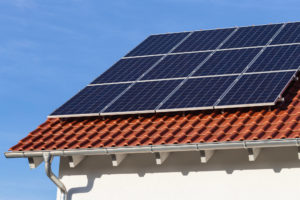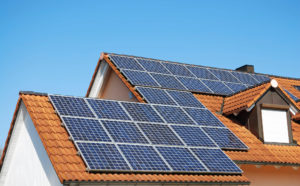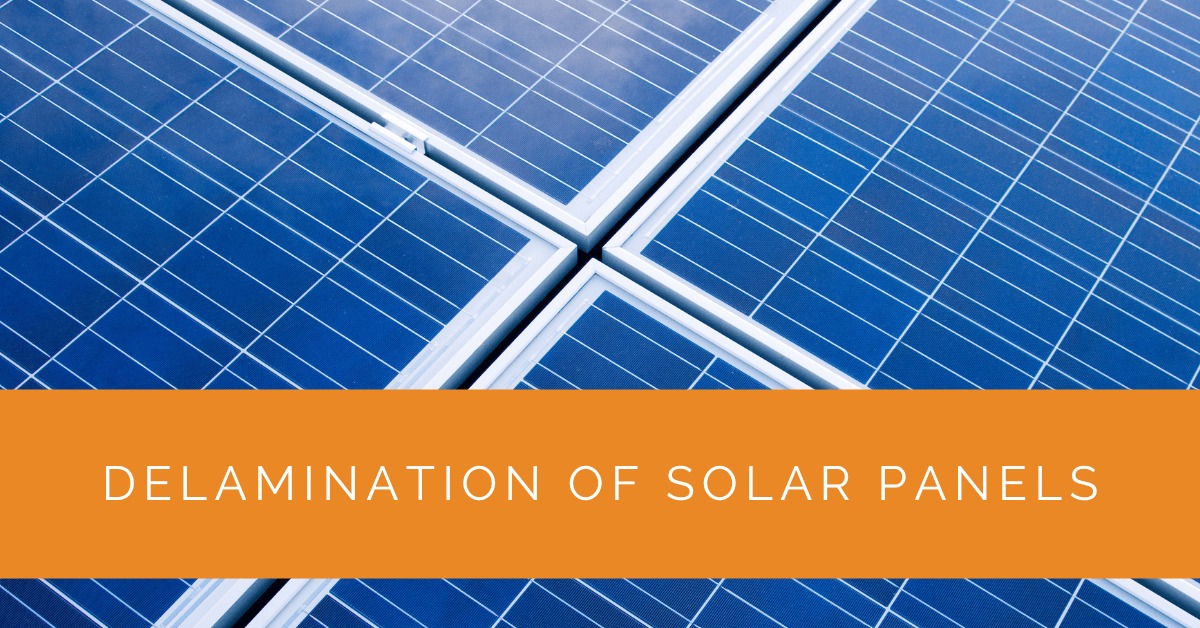Solar panels play a crucial role in harnessing clean and renewable energy. However, the occurrence of delamination can negatively impact their performance and longevity. This article will explore the causes and solutions of delamination in solar panels, highlighting its effects on photovoltaic modules and discussing preventive measures for optimal performance.
Contents
- 1 Key Takeaways
- 2 What is Delamination?
- 3 Common Causes of Delamination
- 4 Detecting Delamination
- 5 Understanding the EVA Layer
- 6 External Causes of Delamination
- 7 Internal Causes of Delamination
- 8 Effects of Delamination on PV Systems
- 9 Preventive Measures and Maintenance
- 10 Addressing Delamination Issues
- 11 Case Study: Addressing Delamination in Solar Panel Installations
- 12 Expert Insights From Our Solar Panel Installers About Delamination of Solar Panels
- 13 Experience Solar Excellence with Us!
- 14 Conclusion
Key Takeaways
- Delamination in solar panels can occur due to various factors, including environmental conditions, manufacturing defects, and material incompatibility, compromising their performance and efficiency.
- Detecting delamination is crucial through visual inspection and performance monitoring, allowing for timely maintenance and repairs to prevent further degradation.
- Preventive measures such as using quality materials, proper installation techniques, regular inspections, and promptly addressing delamination contribute to solar panel systems’ long-term reliability and optimal performance.
What is Delamination?
Defining Delamination in Solar Panels
Delamination refers to separating layers within a solar panel, disrupting the module’s integrity. It typically occurs between the solar cells, the encapsulant, and the backsheet layers, reducing efficiency and potential power output.
Understanding the Impact on PV Module Performance
Delamination poses significant challenges to the performance and durability of solar panels. It compromises the structural integrity, increases the risk of moisture ingress, and leads to electrical issues such as increased resistance and voltage loss. Over time, delamination can contribute to a decline in power output and overall degradation of the module.
Common Causes of Delamination
Understanding the factors contributing to delamination is essential in mitigating the risks associated with this issue. Several causes include:
- Environmental Factors: High temperatures, humidity, and exposure to ultraviolet (UV) radiation can degrade the raw materials used in solar panel construction, leading to delamination.
- Manufacturing Defects: Poor lamination or inadequate bonding during production can weaken adhesion between layers, making solar panels more susceptible to delamination.
- Material Incompatibility: Incompatibility between materials used in the module, such as the encapsulant and backsheet, can lead to delamination over time.
Detecting Delamination
To address delamination effectively, it is crucial to identify its presence. The following signs and symptoms can indicate delamination:
- Visual Indicators: Visual inspection can reveal visible separations, bubbles, or discoloration within the solar module.
- Performance Monitoring: Monitoring the power output and voltage of the solar panel over time can help identify any significant drops or irregularities that may be attributed to delamination.

Understanding the EVA Layer
Ethylene Vinyl Acetate (EVA) is a commonly used encapsulant in solar panels. It is vital in protecting solar cells and facilitating light transmission. However, EVA is susceptible to degradation and delamination under certain conditions. Factors such as exposure to high temperatures, UV radiation, and moisture can lead to the breakdown of the EVA layer, resulting in delamination.
External Causes of Delamination
Corrosion and Moisture Infiltration
Corrosion of metal components within the solar module, such as junction boxes or busbars, can release corrosive agents that degrade the adhesion between layers. Additionally, moisture infiltration through cracks or gaps in the module can cause the layers to separate, resulting in delamination.
Snail Trails and Their Impact on Solar Panel Performance
Snail trails, also known as potential-induced degradation (PID), are dark discolorations or pathways that occur on the surface of solar panels. High voltage differentials typically cause them, leading to localized delamination and reduced performance. Snail trails are a significant concern and can occur due to various factors, including defective materials or improper installation.
Internal Causes of Delamination
Manufacturing Defects and Quality Control Issues
During the production process, errors in lamination, improper bonding, or inadequate quality control measures can weaken adhesion between layers. These manufacturing defects can contribute to delamination, especially when exposed to environmental stressors over time.
Hot Spots and Their Influence on Delamination
Hot spots are localized areas of increased temperature on solar panels, often caused by partial shading or electrical mismatch. The excessive heat generated in these spots can lead to the degradation of materials and weaken the adhesion between layers, potentially resulting in delamination.

Effects of Delamination on PV Systems
Delamination can have detrimental effects on the performance and reliability of solar panels:
- Efficiency Reduction: The separation of layers disrupts the current flow and can increase resistance, leading to a decrease in the overall efficiency of the module.
- Power Output Decline: Delamination can result in reduced power output due to electrical losses and compromised performance of the affected solar cells.
- Structural Integrity Compromise: Delamination weakens the mechanical integrity of the module, making it more susceptible to further damage and potential failure.
Preventive Measures and Maintenance
Implementing preventive measures and regular maintenance is crucial to minimize the risks associated with delamination and ensure the long-term performance of solar panels. Here are some key considerations:
- Quality Materials and Manufacturing: Choosing reputable manufacturers and ensuring adherence to stringent quality control standards during the production process can help reduce the likelihood of delamination.
- Proper Installation Techniques: Following recommended installation practices, such as appropriate mounting and ensuring proper electrical connections, helps prevent potential stress on the module that could lead to delamination.
- Periodic Inspections: Regular visual inspections and performance monitoring can help detect early signs of delamination or any other issues that may affect the solar panel system’s performance.
- Timely Maintenance: Promptly addressing any identified delamination or other issues, such as corrosion or snail trails, through repairs or panel replacements can prevent further degradation and maintain optimal performance.
Addressing Delamination Issues
If delamination is detected, it is essential to take appropriate action to address the issue and ensure the continued functionality of the solar panel system:
- Professional Assessment: Engaging with experienced solar professionals or manufacturers to assess the extent of delamination and determine the best course of action is crucial.
- Repair or Replacement: Depending on the severity of delamination, repairing the affected areas or replacing the affected solar modules may be necessary to restore optimal performance.
- Monitoring and Maintenance: After addressing the delamination issue, regular monitoring and maintenance of the solar panel system should be continued to promptly detect and address any future issues.
Case Study: Addressing Delamination in Solar Panel Installations
Background
At Solar Panels Network USA, we are committed to delivering high-quality solar solutions that ensure the longevity and efficiency of our installations. Delamination in solar panels has been identified as a critical issue that can compromise performance. This case study highlights our approach to detecting, addressing, and preventing delamination in our solar panel installations.
Project Overview
We were approached by a residential client who experienced a significant drop in their solar panel system’s performance. Upon initial assessment, visual signs of delamination were detected in several panels. Our objective was to address the delamination issue, restore the system’s efficiency, and implement measures to prevent future occurrences.
Implementation
Initial Assessment
- Visual Inspection: Our team conducted a thorough visual inspection of the solar panels, identifying visible separations and discolorations indicative of delamination. We also noted potential environmental factors contributing to the issue, such as high humidity levels and prolonged UV exposure.
- Performance Monitoring: Using advanced monitoring tools, we measured the power output and voltage levels of the affected panels. The data confirmed a significant decline in efficiency, correlating with the areas showing delamination.
Addressing the Delamination
- Professional Assessment: We collaborated with the original panel manufacturer to assess the extent of delamination and determine the best course of action. Their expertise and historical data on similar issues provided valuable insights.
- Panel Replacement: Given the severity of the delamination, we decided to replace the affected panels. We sourced high-quality panels with improved encapsulant materials and better resistance to environmental stressors.
- Installation Improvements: During the installation of new panels, we implemented advanced mounting techniques and ensured proper electrical connections to minimize potential stress points that could lead to delamination. We also applied protective coatings to enhance resistance against UV radiation and moisture infiltration.
Preventive Measures
- Regular Inspections: We established a schedule for periodic visual inspections and performance monitoring to detect any early signs of delamination or other issues.
- Quality Assurance: To prevent future occurrences, we reinforced our quality control measures during the procurement and installation processes. This included verifying the compatibility of materials used in the panels and ensuring adherence to stringent manufacturing standards.
- Client Education: We educated the client on maintaining their solar panel system, including the importance of regular inspections and timely maintenance. We also provided guidance on recognizing early signs of delamination.
Results
- Restored Efficiency: The replacement of delaminated panels and improved installation techniques resulted in a significant restoration of the system’s efficiency. The power output returned to expected levels, demonstrating the effectiveness of our intervention.
- Enhanced Durability: The use of high-quality materials and advanced installation methods enhanced the durability of the solar panel system, reducing the likelihood of future delamination.
- Client Satisfaction: The client was pleased with the prompt resolution of the issue and the proactive measures implemented to prevent future problems. They appreciated the detailed information and support provided throughout the process.
Summary
This case study highlights the critical importance of addressing delamination in solar panels to ensure long-term performance and efficiency. By conducting thorough assessments, collaborating with manufacturers, and implementing advanced preventive measures, Solar Panels Network USA successfully restored the client’s solar panel system and enhanced its durability. Regular maintenance and quality assurance are essential in preventing delamination and ensuring optimal performance in solar installations.
Expert Insights From Our Solar Panel Installers About Delamination of Solar Panels
Delamination can significantly impact the efficiency of solar panels. Regular visual inspections and monitoring can help detect early signs, allowing for timely intervention and maintenance.
Senior Solar Technician
Quality control during manufacturing is crucial in preventing delamination. Ensuring proper bonding and using high-quality materials can greatly reduce the chances of this issue occurring.
Solar Installation Manager
Understanding the environmental factors that contribute to delamination, such as high humidity and UV exposure, allows us to implement preventive measures during installation to ensure long-term performance.
Solar Energy Specialist
Experience Solar Excellence with Us!
Trust in Solar Panels Network USA, where our seasoned experts deliver top-quality solar solutions for homes and businesses nationwide. With a legacy of countless successful installations and a commitment to sustainable energy, we’re your reliable partner in the solar journey. Ready for a brighter, eco-friendly future? Call us now at (855) 427-0058 and harness the power of the sun!
Conclusion
Delamination is a significant concern in the performance and longevity of solar panels. By understanding the causes, signs, and preventive measures, individuals and businesses can mitigate the risks associated with delamination and ensure their solar panel systems’ continued efficiency and power output. Regular maintenance, professional assessments, and adherence to quality control standards are essential in addressing and preventing delamination, allowing for optimal solar energy utilization and the long-term sustainability of solar panel installations.
About the Author
Solar Panels Network USA stands at the forefront of solar energy solutions, driven by a team of seasoned solar engineers and energy consultants. With over decades of experience in delivering high-quality solar installations and maintenance, we are committed to promoting sustainable energy through customer-centric, tailored solutions. Our articles reflect this commitment, crafted collaboratively by experts to provide accurate, up-to-date insights into solar technology, ensuring our readers are well-informed and empowered in their solar energy decisions.

